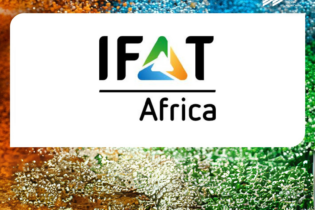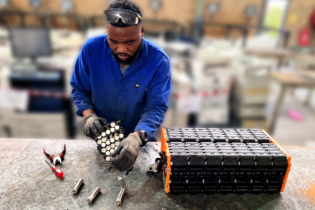The Sustainable Energy Society of Southern Africa (SESSA) says that Germany’s solar-heating growth path, which was on a steady upward trajectory, has hit a speed bump and that country’s environment minister Peter Altmaier has had to put the brakes on the country’s energy revolution.
The problem is the German Renewable Energy Act which compels companies to purchase wind and solar energy from producers at fixed prices. These prices however, are much higher than traditionally produced electricity prices. At the same time, German industry receives very large subsidies. Some of the largest industrial powerhouses consume up to 18% of the electricity produced by pay only 0.3% of the extra costs by the mandated feed-in tariffs. Further to this, Germany’s power grid has not kept up with the explosion of new alternative energy sources, in particular the offshore wind parks currently being constructed in the Baltic and North Seas. Many of those projects are at a standstill, with no way to deliver the power they generate to the mainland. SESSA says that despite this, that country’s rapid adoption of renewable energies should serve as an inspiration to both South African consumers and the providers of heating systems using solar energy, because it proves that ambitious targets can be met if there is sufficient will. Ombudsman, Carel Ballack, said that word out of Germany is that the fast pace into the renewables future has presented German consumers with spiraling electricity bills. According to Ballack: “Unfortunately, the inefficiency of the renewable energy subsidy programme has driven up the cost of the energy revolution to a point where projects have been put on hold while a debate on how to reach the targets in the most cost-effective way is concluded. “Despite this setback to the north, South Africa should be inspired by the gusto with which Germany attacked its sustainable energy targets.“In June last year, Chancellor Angela Merkel announced that Germany was turning away from nuclear power and toward renewable energies. Her government decided that by 2020 renewables would make up a 35% share of the energy mix.
“Many regarded this figure as unattainable but in the first half of 2012 – that’s eight years before deadline – the country generated 25% of its electricity needs via wind, solar and other alternative power sources.
Ballack continued by saying that the South African energy department has a target to replace 10 000 GWh with sustainable energies by next year and at least 23% of this, or 2 300 GWh could be delivered by solar heating. “According to Eskom’s website, by September 2011, 60 GWh of saving had been achieved via the installation of 156 000 systems through its rebate scheme. By August this year, the number of installations claimed for had increased by 84% to 240 058 units, according to the latest DASH report. This, we can extrapolate, brings the saving up to about 110 GWh. This is far short of the target but, if we look to Germany for inspiration, we can turn the situation around.” Despite the fact that South Africa averages more than 2 500 hours of sunlight per year in certain areas, the consumer must still be convinced to make the shift to solar. Germany sees far less sunlight and has succeeded. Since 1974, SESSA has been dedicated to the use of renewable energy and energy efficiency including all solar-based energies such as photovoltaics, thermal heating and cooling, wind, biomass and hydro power. It is the duly appointed African office of ISES and has a position on its board. The current SESSA representative is mechanical and mechatronic engineering specialist, Professor Wikus van Niekerk of Stellenbosch University. SESSA’s objectives include: promoting and increasing the use of renewable and energy efficient technologies with informal education, demonstration and information dissemination to end-users and decision makers of all levels; establishing the society as the main regional information centre in close co-operation with similar initiatives; facilitating the creation and maintenance of appropriate standards for products, systems, methods and training; supporting initiatives that promote the creation of local ‘green-collar’ jobs and highlight green enterprise opportunities and lobbying government, big business, civil society and parastatal organisations towards adopting a low carbon energy future. Source: sessa.org






